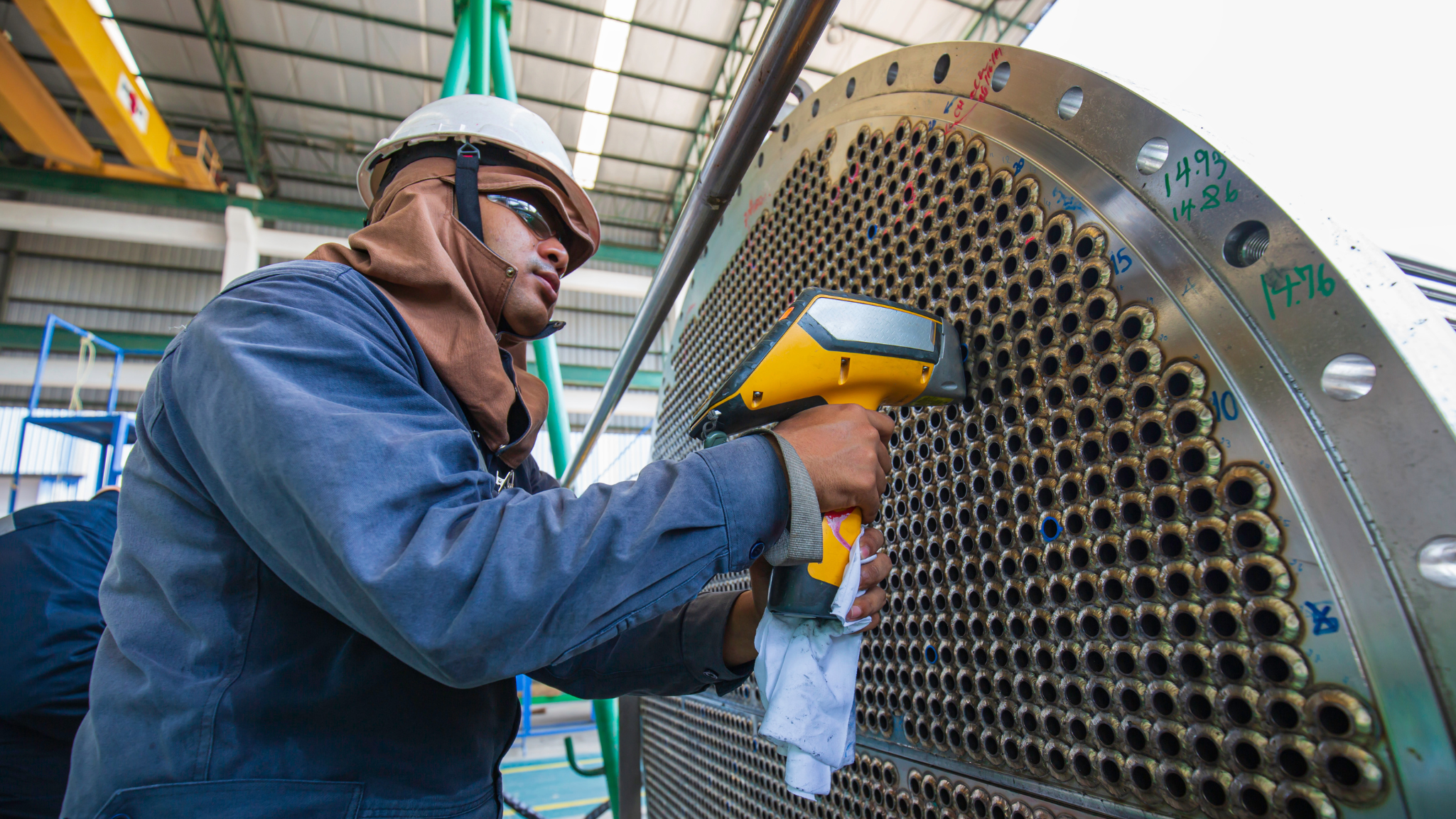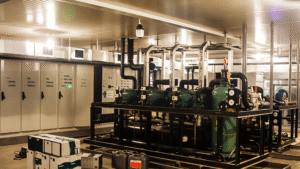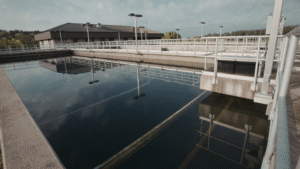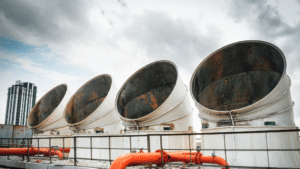Industrial facilities in Pennsylvania withdraw roughly 6 billion gallons of water every day — much of it cycled through processes and returned to the same watershed. While this non-consumptive use helps preserve water availability, it also places intense pressure on facilities to return water free from scale-forming minerals, solids, and other contaminants. Even small inefficiencies in water quality management can ripple into production downtime, increased operating costs, and compliance risks.
Advanced dispersants are a frontline defense against these issues, helping prevent scale buildup, fouling, and particulate deposition in critical systems. By keeping process water and wastewater flows cleaner, dispersants not only protect industrial equipment but also support long-term operational efficiency and regulatory compliance.
Facilities in the state operate under the Pennsylvania Department of Environmental Protection’s (PA DEP) industrial stormwater and wastewater frameworks, including the PAG-03 General Permit and National Pollutant Discharge Elimination System (NPDES). These programs require facilities to keep tight control over solids, contaminants, and scale-forming materials — all areas where dispersants can make a measurable impact.
In Ohio, different compliance timelines, including anticipated state-level PFAS limits by 2027, are creating parallel pressures for adaptable chemical treatment strategies. Across both states, the message is clear: cleaner systems mean better performance, lower costs, and a stronger position to meet environmental standards.
The Role of Dispersants in Industrial Wastewater and Process Water Systems
In many industrial processes, water is not just a utility but a critical operating medium. It flows through cooling towers, circulates in heat exchangers, and carries raw materials through production lines. Over time, this water can accumulate soluble organic material, suspended solids, and scale-forming minerals that reduce heat transfer efficiency, restrict flow, and accelerate equipment wear.
Dispersants are chemical treatment agents designed to prevent these particles from settling or aggregating. By modifying particle surface charges and keeping contaminants suspended in the water, dispersants make it easier for downstream filtration or separation steps to remove them.
Applications Across Key Industrial Systems
This function is especially valuable in wastewater systems and process water loops, where untreated buildup can lead to unplanned shutdowns, higher operating costs, and increased maintenance demands. In cooling towers, dispersants inhibit the accumulation of mineral scale and biological matter on fill media and piping, helping maintain consistent thermal performance.
In manufacturing sectors such as food and pharmaceuticals, dispersants help protect product quality by preventing contamination from particulate carryover. Across industrial plants, dispersants contribute to improved efficiency, longer equipment life, and fewer compliance-related disruptions.
Synergy with Other Treatment Technologies
When used alongside pretreatment technologies such as media filtration, reverse osmosis, or ion exchange, dispersants act as a performance multiplier. They extend the life of these systems by reducing fouling potential, supporting stable output quality, and ensuring that treated water meets both operational and regulatory standards.
Common Water System Challenges Without Effective Dispersants
Without effective dispersant programs, industrial water systems are vulnerable to a cascade of performance problems. Soluble organic material and mineral solids can bind together, forming deposits that narrow piping, reduce flow rates, and impair heat transfer. In untreated waste streams, these deposits can accumulate in basins, clarifiers, and membranes, forcing unplanned cleaning cycles and increasing downtime.
Heavy metals present another challenge, particularly in sectors like petrochemicals, metals manufacturing, and industrial machining. When not properly dispersed, these metals can precipitate out of solution, forming scale or sludge that is difficult to remove. Over time, these deposits can damage industrial equipment and accelerate corrosion rates.
Regulatory and Compliance Risks
Elevated solids and scale-forming materials can lead to compliance risk under state and federal discharge permits. In Pennsylvania, recent PFAS regulations and PAG-03 stormwater requirements have made particle control more critical than ever, since scale and suspended solids can act as carriers for persistent contaminants. Facilities that fail to control these particulates may face permit violations, fines, or increased oversight.
Public Health and Safety Concerns
In cooling towers, uncontrolled buildup creates favorable conditions for microbial growth, including Legionella, which can pose significant human health hazards if aerosolized. The 2024 Legionella outbreak in Pennsylvania underscored the importance of preventing these conditions through consistent dispersant use and system monitoring.
Economic Impact
From an economic standpoint, these issues translate into higher operating costs, reduced efficiency, and shortened equipment lifespan. For industries operating under strict wastewater management requirements, the absence of effective dispersants can mean not just lost productivity, but also reputational damage and the need for costly system overhauls.
Learn how we resolve this in our recent blog: Troubleshooting Chemical Dispersant Problems in Water Treatment
Advanced Formulation Principles for High-Performance Dispersants
Modern dispersant formulations are engineered to perform across a wide range of water chemistries and operational conditions. This means maintaining effectiveness under variable pH, temperature fluctuations, and differing levels of dissolved and suspended solids. Advanced blends often use polymer-based or phosphonate-modified compounds that remain stable in challenging environments, ensuring consistent particle suspension.
Optimizing Chemistry for Stability and Compatibility
Compatibility is equally important. Dispersants must integrate smoothly with other chemicals in a treatment program — such as corrosion inhibitors, biocides, or coagulants — without causing unwanted reactions or diminishing performance. For facilities running multi-stage systems, compatibility reduces the risk of scale reformation downstream and helps maintain overall system balance.
Aligning with Environmental Stewardship Goals
Facilities in both Pennsylvania and Ohio are under increasing pressure to align operational strategies with environmental stewardship and corporate social responsibility commitments. Dispersant formulations are evolving to use lower-toxicity ingredients, biodegradable components, and reduced phosphorus content, helping facilities meet discharge standards and sustainability goals without sacrificing performance.
By selecting dispersants with these environmental attributes, operators can better navigate compliance challenges tied to state and federal water quality standards, while demonstrating proactive environmental responsibility to regulators and local communities.
Addressing Contaminant Challenges Across Industries
Advanced dispersants are designed to handle a broad spectrum of contaminants — from mineral scale and heavy metals to organic deposits that can clog systems. In industrial applications such as petrochemical refining, food processing, and pharmaceuticals, dispersants help protect product integrity by keeping process lines and heat transfer equipment clean.
For sectors facing persistent contaminant concerns, such as PFAS or fine particulate carriers, modern dispersant chemistry can be tuned for enhanced stability, ensuring particles remain suspended until they are captured in filtration or separation stages.
Maximizing Performance While Improving Efficiency
High-performance dispersants are not only about preventing deposits; they also contribute directly to improve performance metrics across the facility. Cleaner systems mean better heat transfer, reduced pump strain, and more predictable operational cycles. The result is a measurable boost in efficiency, longer equipment lifespan, and lower overall chemical consumption, translating into cost savings and reduced downtime.
Integrating Dispersants into Comprehensive Treatment Programs
In modern industrial water treatment, dispersants work best when integrated into a multi-barrier approach. While they effectively suspend particles and prevent deposit formation on their own, their full potential is realized when paired with complementary technologies. These include media filtration for removing suspended solids, reverse osmosis for desalination and contaminant reduction, and ion exchange for targeted removal of dissolved ions. Together, these systems create a layered defense against fouling, scale, and compliance failures.
Enhancing Water Reuse and Conservation Efforts
With Pennsylvania allowing recycled water for process water, cooling, and boiler applications under state and federal standards, dispersants play a direct role in enabling water reuse. By keeping recycled flows free from scale and particulate buildup, they reduce the need for frequent cleanings and prolong the life of filtration membranes. This not only supports water reuse initiatives but also helps lower makeup water demands and sewer charges — a cost-saving priority in both Pennsylvania and Ohio’s industrial sectors.
Tailoring Programs to Operational and Regulatory Needs
The ideal dispersant program is tailored to a facility’s operational needs, water chemistry, and compliance obligations. For Pennsylvania sites, this may mean aligning with the PAG-03 Industrial Stormwater General Permit or meeting strict effluent quality under NPDES. In Ohio, where PFAS MCLs are not yet in force, facilities can still benefit from early baseline monitoring and dispersant program adjustments to prepare for upcoming rules.
Driving Consistent Performance Across Industries
From industrial plants in manufacturing hubs to facilities along the Ohio River corridor, dispersants help standardize water quality outcomes across diverse sites. This consistency not only protects equipment but also ensures that facilities remain competitive in terms of costs, reliability, and compliance.
Regional Compliance Drivers and Best Practices
Compliance requirements for dispersant programs are not uniform across the United States, and facilities in Pennsylvania and Ohio face distinct regulatory pressures. Understanding the local rules, enforcement trends, and water quality challenges in each state is essential for designing a chemical treatment program that both performs and complies.
Pennsylvania: Enforced PFAS Limits and Active Permit Cycles
Pennsylvania’s regulatory landscape has a direct influence on chemical treatment strategies. The state’s enforceable maximum contaminant limits (MCLs) for PFOA (14 ppt) and PFOS (18 ppt) in drinking water, introduced in January 2023, are already influencing industrial water treatment programs. While these limits technically apply to drinking water, many industrial clients are incorporating PFAS monitoring into their own specifications to align with corporate ESG goals and avoid downstream liabilities.
The PAG-03 Industrial Stormwater General Permit (effective through 2028) and active NPDES renewal cycles are also pushing facilities to improve solids control and prevent scale or sludge buildup. Dispersants, when properly selected and dosed, help facilities meet these requirements by keeping particles suspended until they can be removed in filtration or clarification stages.
Ohio: Preparing for PFAS Rules and River Corridor Enforcement
Ohio’s PFAS MCLs are expected by 2027, giving facilities a window to prepare — but enforcement actions in the Ohio River corridor show that regulators are already cracking down on high-profile contaminant discharges. Facilities along this corridor, particularly in manufacturing and petrochemical sectors, face heightened scrutiny due to the river’s role as a drinking water source for millions.
Ohio’s OHR000007 Industrial Stormwater General Permit, renewed in 2022, provides a framework for solids and contaminant control that can be supported through robust dispersant programs. Even without immediate PFAS enforcement, integrating dispersants into pretreatment can help facilities get ahead of future compliance timelines.
Best Practices for Compliance-Ready Dispersant Programs
- Baseline Monitoring: Regularly test for suspended solids, scaling minerals, and target contaminants such as PFAS carriers.
- Program Integration: Align dispersant chemistry with filtration, reverse osmosis, and ion exchange systems to maximize removal efficiency.
- Permit Alignment: Review state permit requirements annually to ensure treatment programs match evolving effluent limits.
- Proactive Maintenance: Use dispersants to reduce fouling and cleaning frequency, lowering both operational downtime and costs.
By tailoring dispersant programs to each state’s compliance profile, facilities can reduce regulatory risk while improving system performance and sustainability outcomes.
ETI’s Expertise and Customer-Centric Solutions
For over three decades, ETI has developed dispersant programs that address the full spectrum of particulate challenges in industrial water treatment. Our advanced dispersant line is engineered to prevent scale and mineral deposits, combat biological fouling, and keep suspended solids from settling in low-flow areas. This three-pronged approach ensures cleaner systems, better heat transfer, and longer equipment life.
Advanced Dispersant Technologies for Industrial Systems
Unlike commodity chemicals, ETI’s dispersants are built on proprietary polymer engineering — optimized molecular weight distribution, functional group density for targeted particle interaction, and thermal and pH stability for performance under extreme operating conditions. These characteristics make our products reliable even in high-solids environments where conventional dispersants often fail.
Formulation Expertise Across Applications
ETI tailors dispersant chemistry to the specific operational environment:
- Cooling water systems: High-performance dispersants maintain efficiency in high-hardness, high-alkalinity waters.
- Boiler systems: Formulations withstand high temperatures and pressure, preventing deposit formation while working alongside oxygen scavengers and scale inhibitors.
- Closed-loop systems: Dispersants keep heat transfer surfaces clean without frequent chemical additions.
- Biodispersants: Specialized blends disrupt biofilms, enhancing biocide effectiveness and preventing microbial fouling.
- Wastewater applications: Products improve clarification and solid-liquid separation, boosting treatment efficiency.
Integrated System Protection
Our dispersants are designed to work synergistically within a complete treatment program, enhancing scale inhibitor performance, improving biocide penetration, and optimizing filtration system efficiency. By controlling particle size distribution, dispersants enable downstream systems — such as side-stream mechanical filtration — to operate at peak capacity.
Proven Results Across Industries
ETI dispersant programs have delivered measurable gains in power generation, manufacturing, food and beverage processing, and commercial HVAC applications. From improving cooling tower efficiency by over 10% at a power facility to extending cleaning intervals in precision manufacturing systems from monthly to quarterly, our solutions deliver both operational and cost-saving benefits.
Complementary Scale Removal Solutions
In addition to dispersants, ETI’s water scale remover products dissolve existing deposits and prevent future scale formation in boilers, cooling towers, condensers, and piping. This complements dispersant programs by addressing existing buildup while keeping systems protected moving forward.
For more information on our Advanced Dispersant Technologies, Coagulants, and Flocculants, visit our service pages to explore how our solutions can be integrated into your treatment program.
The Bottom Line
In today’s regulatory and operational climate, maintaining clean, efficient water systems is no longer optional — it is essential for keeping industrial plants running at peak capacity, avoiding costly downtime, and staying in compliance with evolving environmental standards. From cooling towers to process water loops, advanced dispersant formulations directly address the most common pain points faced by operators: scaling, fouling, solids buildup, and the risk of permit violations.
For facilities where the stakes are especially high. Stricter discharge requirements, growing attention to PFAS and other persistent contaminants, and the push toward sustainable water reuse demand treatment programs that are both technically sound and adaptable. Dispersants are a critical component of this strategy, keeping systems cleaner for longer and protecting valuable industrial equipment from avoidable wear.
ETI understands that each facility has unique operational needs. That’s why our team works directly with water treatment companies and facility managers to create dispersant solutions engineered for specific water chemistries, operating conditions, and compliance frameworks. By combining advanced polymer technology, application-specific formulation, and ongoing performance support, we help you maintain efficiency, control operating costs, and extend equipment life.
If your facility is facing recurring fouling, scale deposits, or compliance concerns, ETI can provide the proven chemistry and expertise to solve these challenges. Contact ETI today to discuss how our chemical water treatment can be integrated into your water system for maximum performance and compliance assurance.
Frequently Asked Questions (FAQs)
How do dispersants improve performance in industrial wastewater treatment?
In industrial wastewater applications, dispersants prevent scale deposits and suspended solids from settling in clarifiers, tanks, and piping. This makes wastewater processes more efficient by keeping contaminants in suspension until they can be removed through filtration or separation. As a result, facilities can maintain higher treatment throughput, protect equipment from fouling, and reduce the likelihood of exceeding effluent limits.
Can dispersants be used alongside other technologies for better results?
Yes. Dispersants are often paired with other technologies such as biological aeration systems that use small bubbles for oxygen transfer, or advanced filtration systems for solids removal. In these setups, dispersants help control particle size and surface properties, ensuring that downstream processes — like dissolved oxygen uptake in biological treatment — work more effectively.
Are dispersants effective for industries that handle oil or hazardous waste?
Many industries, including those processing oil or managing hazardous waste, can benefit from dispersants. These chemicals prevent oily particulates from adhering to equipment surface areas and keep them suspended for removal. This helps protect critical systems, reduces corrosion risk, and supports compliance with water and wastewater discharge requirements.
How do dispersants support facility operations aiming for zero liquid discharge?
For a facility pursuing zero liquid discharge or circular economy goals, dispersants help control solids concentration in recycle loops and pre-concentrated brine streams. By maintaining clean surface areas in heat exchangers and membranes, dispersants improve operational stability, extend equipment life, and reduce downtime during high-solids operations.
What role do dispersants play in manufacturing operations and production quality?
In manufacturing operations, dispersants protect production systems by preventing fouling in process loops, cooling circuits, and filtration equipment. Cleaner systems help ensure consistent product quality, lower operating costs, and reduce unplanned maintenance. They also help control contaminants that could otherwise compromise performance or lead to disposal challenges.
Can dispersants treat high-concentration wastewater streams?
Yes. In high concentration or heavily loaded treatment systems, dispersants prevent particle agglomeration and keep contaminants evenly distributed so they can be effectively removed. This is particularly important for petrochemical plants, pharmaceuticals, and most industries handling challenging waste streams. By maintaining steady particle suspension, dispersants protect downstream systems and improve overall treatment outcomes.





